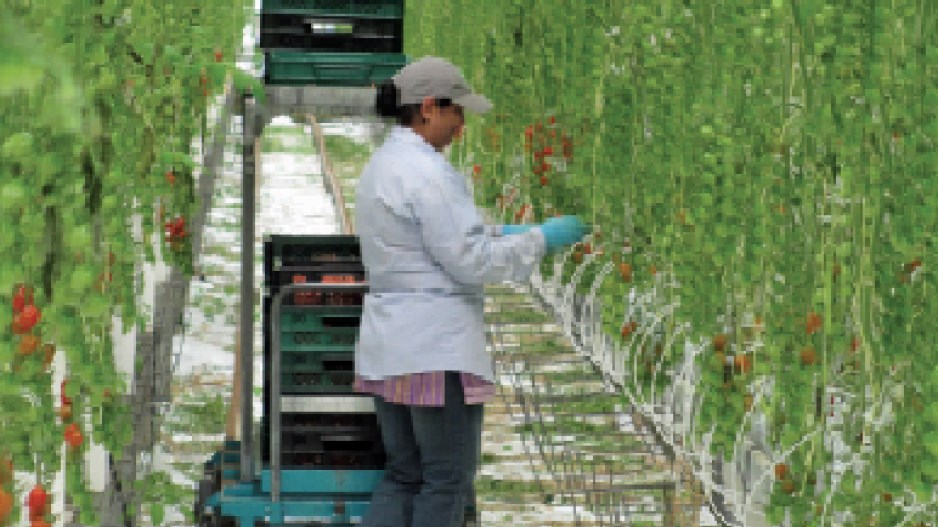Surging productivity at B.C. greenhouses is giving consumers access to more local vegetables than ever, prompting a push by growers to boost local sales.
There are now 755 acres of greenhouses in the province, up from 675 in 2009, producing 125,000 tonnes of cucumbers, lettuce, tomatoes, bell peppers and eggplant each year. Annual sales total $257 million, traditionally anchored by exports to the U.S.
But shifting exchange rates and the trend to buy local have increased domestic sales. Growers now sell approximately 46.7% of their product in Canada versus 41% in 2009, said the BC Greenhouse Growers' Association, which organized B.C. Veggie Day on March 20 with $100,000 of provincial funding.
"Local has been a huge trend over the last five years," said Mike Reed, president of BC Hot House Foods Inc. in Langley, the province's oldest distributor of greenhouse produce. "Retailers are now supporting it with ... a lot of information for the consumers, and I think sometimes we get missed on that.
The campaign coincides with the first deliveries from local greenhouses, some of which supply local grocers with produce from facilities in the U.S. Southwest, California and Mexico when daylight hours grow short in B.C.
"The timing is perfect, as we're just making the shift away from southern production and the start of our local production," Reed said. "Consumers don't necessarily know what our season is here in B.C., and that's where I think the campaign is good to kick-start it."
Buying local gives consumers fresh produce that's travelled a shorter distance to market, but it also benefits producers, who typically see a better a return without the costs associated with exports.
"It reduces the carbon footprint, and our best market is our home market," said Linda Delli Santi, a former hot house tomato grower who now serves as executive director of the 42-member growers' association. "Our growers make money if they sell in Vancouver than if they sell in New York, and it's fresher."
Dirk de Jong, regional manager for Village Farms in Delta, said approximately 75% of produce from the 110 acres he oversees goes to the U.S. This is up slightly from when Village Farms acquired the facility in 2006, but de Jong wouldn't mind more local sales.
"You don't want to expand here and ship to the U.S.," he said during a recent tour of the facility.
And production is increasing: provincewide, greenhouses produced an additional 15,000 tonnes in 2013 versus 2012, thanks to an extra 11,000 tonnes of peppers.
Pepper production is increasing worldwide, de Jong said, in part as health-conscious consumers look for something new. Brightly coloured bell peppers fit the bill.
Savvy packaging doesn't hurt, added Reed, noting that many producers have shifted from bulk sales to prepackaged assortments.
"We've seen a lot of retailers that have embraced what we call value-added packs – three-pack peppers, two-pound peppers – and that's helping to drive additional consumption," he said. "The consumer who might just have gone in and put one in their basket and they're picking up three at a time. It's a value."




